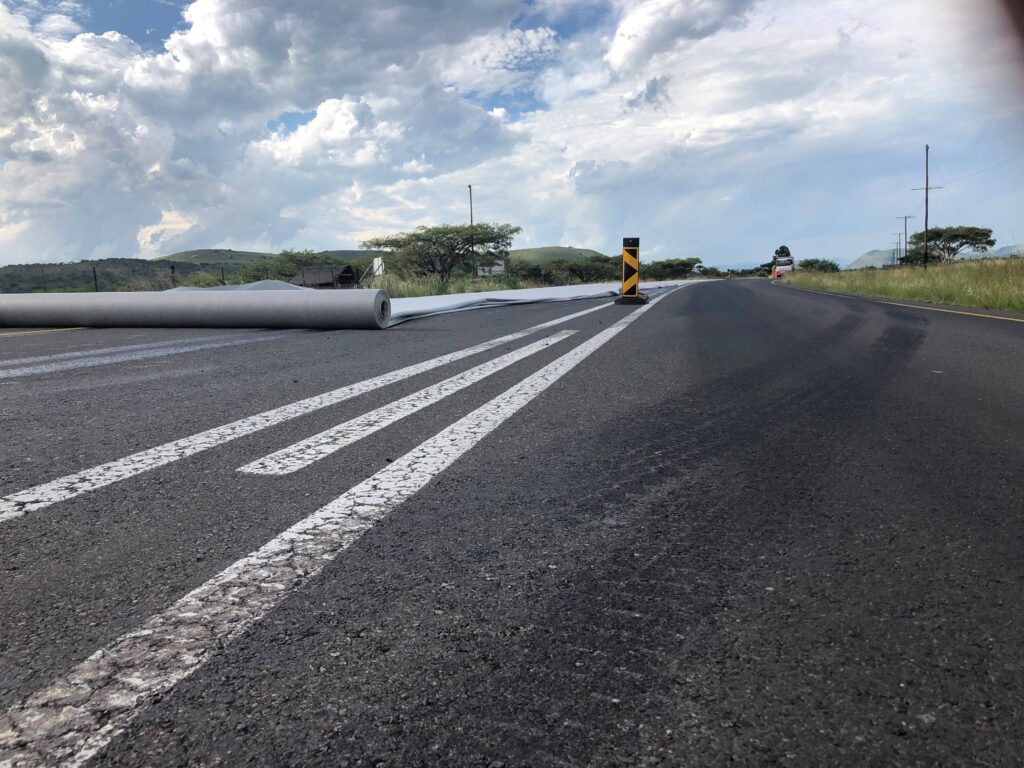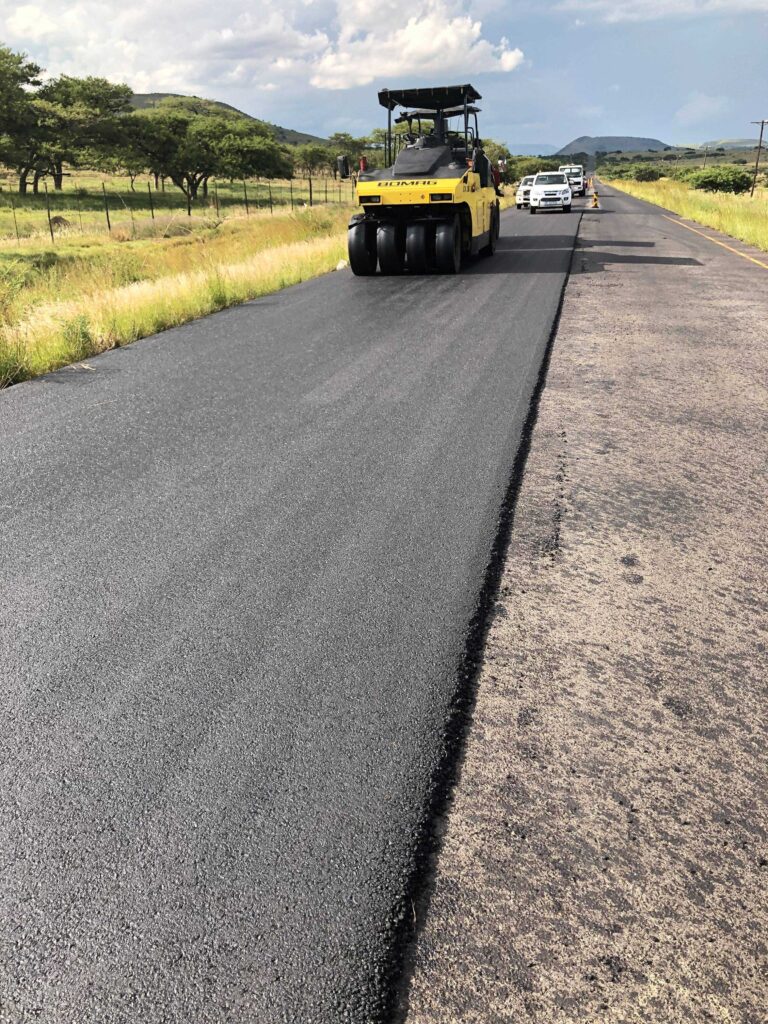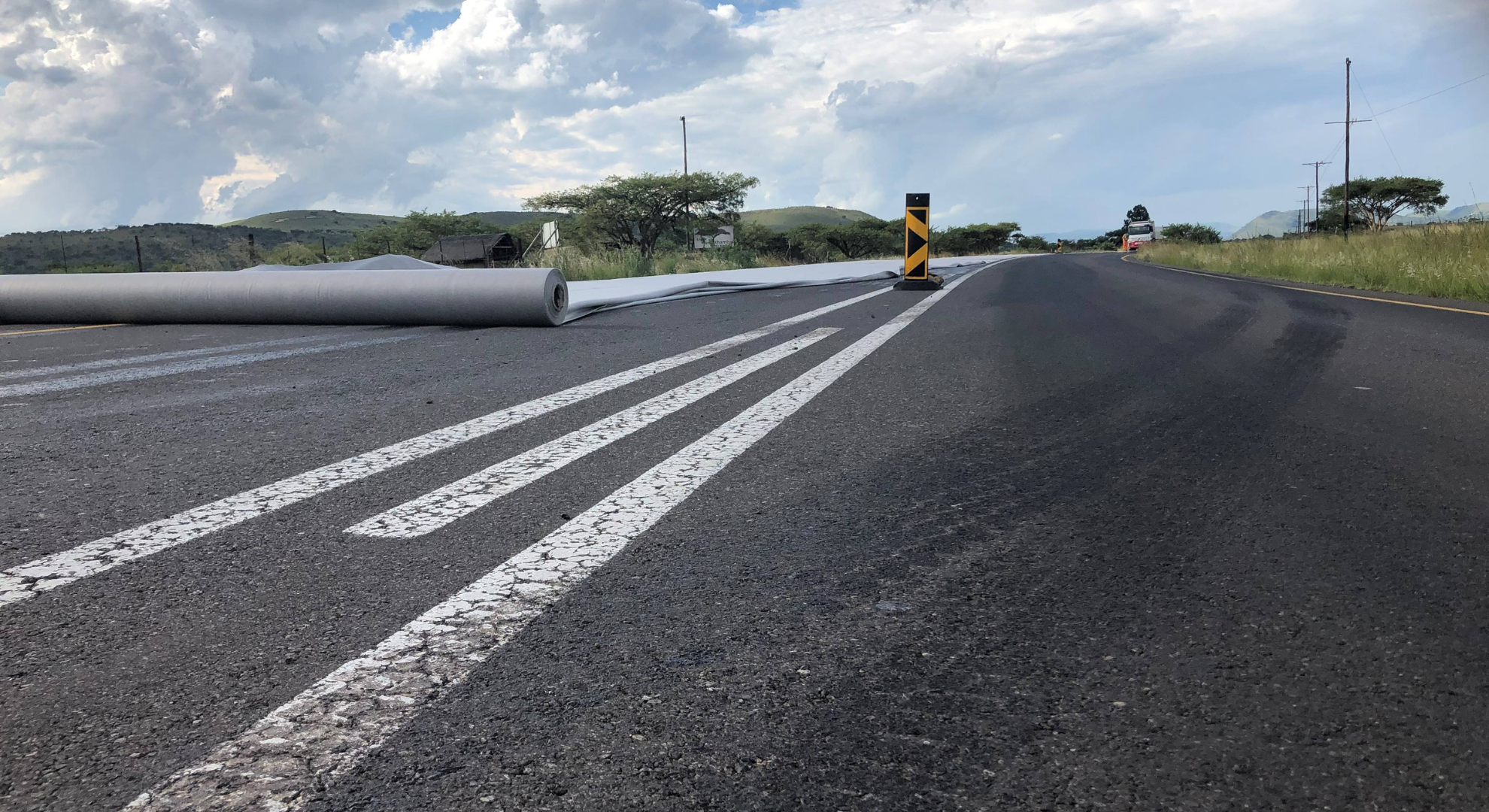Fibertex South Africa’s solutions for road pavement maintenance include the manufacture and supply of Fibertex AM-2, which is a flexible nonwoven paving fabric, specifically developed for road engineering conditions in Africa.
“Reflective cracking and water intrusion are significant contributors to pavement deterioration in both rigid and flexible road constructions. Existing cracks in old asphalt layers allow water ingress when overlaid with new asphalt, compromising the overall lifespan and driving quality of the road,” explains Brian Potgieter, Technical Sales Engineer, Fibertex South Africa – specialists in a wide range of nonwovens, geosynthetics and performance-based materials. “Fibertex has developed a nonwoven paving fabric – Fibertex AM-2 – that specifically addresses these issues through a two-fold mechanism: as awaterproofing membrane and as a Stress Absorbing Membrane Interlayer (SAMI).
“As a waterproofing membrane, Fibertex AM-2 acts as a barrier, substantially reducing water permeation through the asphalt overlay and into the underlying pavement structure. This mitigates the detrimental effects of water ingress. The fabric also functions as a SAMI, absorbing stress caused by differential loads on the road surface. This material helps prevent the propagation of existing cracks from the lower pavement layers to the newly installed overlay, delaying the onset of reflective cracking.
“Benefits of this system include reduced maintenance cycles and costs. By extending pavement life and minimising reflective cracking, Fibertex AM-2 allows for extended intervals between road maintenance projects, leading to significant cost savings. The use of Fibertex AM-2 may allow for a reduction in the overlay thickness required, further contributing to cost efficiency. In addition, this material can be applied mechanically for large-scale projects or manually for narrow installations, offering flexibility in application methods.
Comparison with traditional asphalt overlays:
While traditional asphalt overlays offer some mitigation of reflective cracking, Fibertex AM-2 provides a more comprehensive solution by addressing both water intrusion and stress absorption. This two-pronged approach demonstrably extends pavement lifespan and reduces overall maintenance costs.
The established benefits of asphalt overlay geotextiles in general, align with the technical aspects of Fibertex AM-2. These features include-reduced reflective cracking, greater flexibility and enhanced pavement performance.
Fibertex AM-2 offers a technically sound solution for road pavement maintenance by addressing water intrusion and stress absorption. This innovative approach translates to extended pavement life, reduced maintenance cycles and significant cost savings.
Basal stabilisation and load capacity
Fibertex F-range nonwoven geotextiles function as a separator layer within the road base (prism). This separation layer allows for optimised road design by reducing the load-bearing layer thickness and enhancing load distribution, as well as improving durability and minimising environmental impact.
Thegeotextile effectively separates the engineered fill from the subgrade, preventing intermixing. This allows for a thinner load-bearing layer design while maintaining its load capacity. The geotextile transmits and distributes traffic loads more efficiently across the entire road structure, further contributing to an optimised design and cost savings.
In weak subgrade conditions, without a separation Fibertex fabric, two issues arise – engineered aggregates can punch through the weak subgrade, compromising stability or a weak subgrade material can migrate into the engineered fill, reducing the overall base course strength and potentially leading to rutting.
Virgin PP geotextiles, with high chemical stability across a wide pH range, are suitable for most civil engineering environments. This ensures long-term product performance, minimising project cost impacts and potential environmental issues from product failure.
Fibertex offers UV-stabilised virgin PP geotextiles – the only nonwoven geotextiles in Africa certified for over 100 years of durability, according to the latest EN standards.
Fibertex South Africa’s geosynthetic portfolio goes beyond basal stabilisation. The company offers a comprehensive range of products to address various civil engineering challenges, including basal stabilisation, where Fibertex F-grade geotextiles have been developed for optimised road design and load capacity improvement. Geotextiles are also used for soil reinforcement and stabilisation, where geogrids and geocells enhance soil strength and stability in applications like embankments, slopes, and retaining walls.
Fluid barrier systems includeGeosynthetic Clay Liners (GCLs) which are designed for low permeability barriers in landfill and containment applications. Geomembranes (GMBs) are suitable for high impermeability applications and are often used in composite lining systems with GCLs for enhanced containment security.
This diverse range of geosynthetics caters to diverse civil engineering and environmental needs. Fibertex specialists offer a technical advisory and support service throughout Africa.





